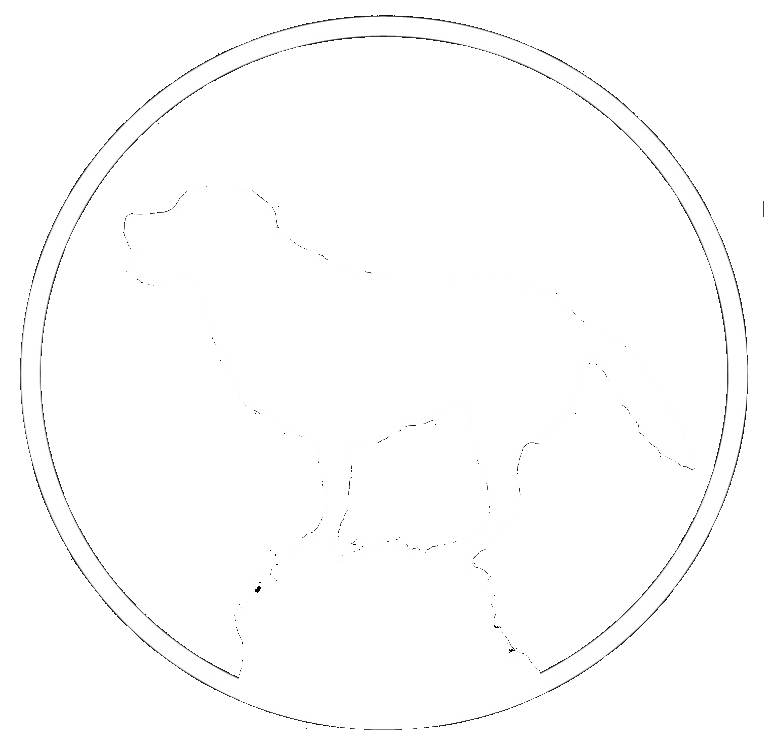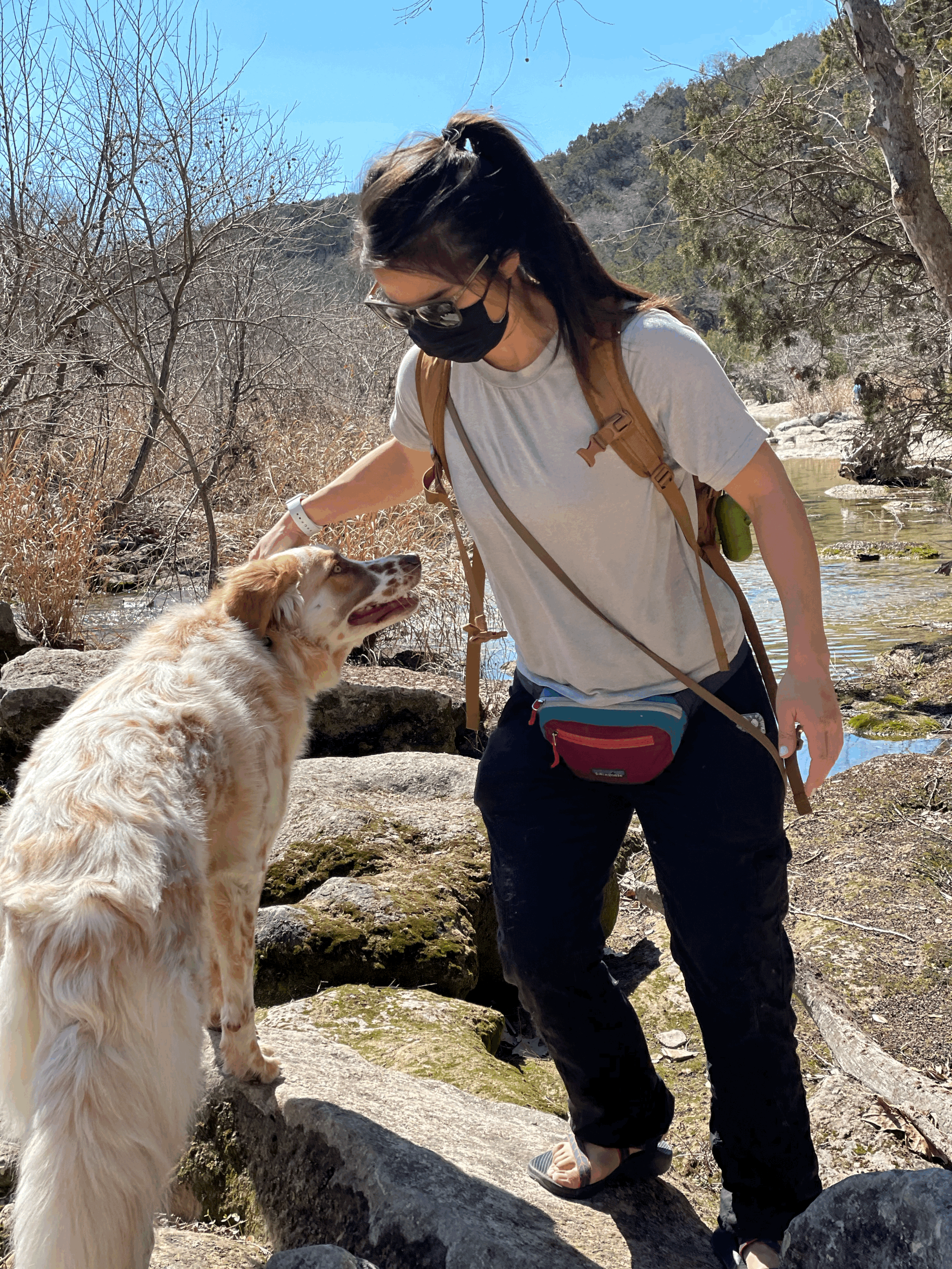Petting a dog may seem like the most obvious and intuitive thing in the world. Just stick your hand out and scratch them. The truth is that almost daily I see people petting dogs in a way that makes the dogs uncomfortable. In America we LOVE saying hello to each other’s dogs. Bringing a dog in public seems to have been equated with having a therapy dog on duty. People come up from out of nowhere asking to pet them - and that is the best case scenario. I have had people run, actually run, up to my dog, Harley, to pet her, pet her without my knowing it when she’s standing behind me, even pick her up when she’s off leash. I have had parents watch their children surround her when I tied her outside a coffee shop momentarily and chide me for leaving her unattended if I didn’t want such a thing to happen when I came back and expressed that the dog wasn’t comfortable and approaching an unfamiliar and unattended dog wasn’t a great idea. I see people let newly rescued dogs or young puppies be surrounded or passed around. The bar for what dogs in public have to tolerate from us humans is very high, and the bar for us humans learning about what works and doesn’t work for dogs is devastatingly low.
There is a right way and wrong way to greet a dog and if we knew how to do this, our interspecies interactions would almost certainly go better. Learn these tips and be an ambassador for this beloved species that we can keep getting to know more and more deeply.
Ask the owner if they are friendly
It’s important to check in with an owner before you go to interact with a dog. Don’t pet a dog whose owner isn’t paying attention. The dog will feel more comfortable if the owner is watching and is mentally engaged. It’s also important to get verbal permission because dogs that seem friendly aren’t always.
Get into position
Dogs read body language and I have found this posture is the best way to make them feel comfortable.
Slightly extend your hand down towards the dog without moving towards them
Turn to the side so your feet point diagonally away from the dog,
Kneel at the knees (preferred) or bend over at the hips so you can quickly stand
Look down at your hand or between your hand and the dog so you can keep an eye on the dog without directly looking at them
Keep taking deep breaths and keep your muscles relaxed
Eye contact is polite for primates, but not for dogs. Averting your gaze will make a dog more comfortable, but you must only appear to do so from their perspective. Be sure you are still keeping an eye on the dog so if they seem uncomfortable you can stand up, move backwards and remove your hand.
Read the dog’s response
A happy dog who wants to get a pet will sniff your hand, wag its tail and move towards you. Often this sniff is enough of an interaction and I will end it there.
If you want to pet the dog, slowly move your hand forward and see if they continue to move towards the interaction.
We recommend keeping your hand in the dog’s eyeline and moving towards their shoulder instead of petting them with your hand moving down from above into their blindspot on to the back of their neck, one of the most vulnerable parts of a dog’s body.
Give a quick pet (3-5 seconds) then stand up and take a step back. Always try to end the interaction on a good, calm note, before the dog gets too excited, tries to jump or lean on you, mouth your hand, or pushes further into your space.
The focus of this post is on petting in a way that makes a dog comfortable, but remember, even if we pet a dog for our own pleasure, it’s still a reward for the dog. If a dog gets too excited, by continuing to pet them we are rewarding a mindset that leads to behaviors that we don’t want.
A hesitant dog may move forward to sniff you while keeping their weight on their hind feet. Their body may be stiff or their tail may move in a low, slow wag.
If this is the case you can take a deep, relaxing breath and stay where you are, talking to the owner while keeping an eye on the dog in your peripheral vision. You may choose to stand up and end the interaction to show the dog that you read and respect their discomfort.
Do not move closer or try to pet this dog.
If you lean down to offer your hand to be smelled and the dog takes a step back or turns their head away, stand up and take a step back. This is respectful and the safest response.
A fearful dog will take a step away or move behind their owner, put their hackles up or maybe even curl their lip or growl. These are all the most obvious signals. More subtly, this dog could display whale eye, where you can see the whites of their eye, a tight facial expression, light, shallow breathing and stiff body language.
Not every dog wants to be pet by a stranger and that is okay! Maybe they aren’t feeling well that day, are nervous around new people or are uncomfortable in the environment.
By reading body language and social cues we know if a person wants to talk to us, shake our hand or is open to receiving a hug. Our dogs also send these cues, but most of us don’t know how to read them or aren’t present enough to respond appropriately.
Because so many dogs are friendly and like to meet or be pet by strangers, we assume that all dogs want to be pet. If the stranger or handler doesn't read a dog’s signals and a bite occurs, it isn’t really the dog’s fault. They likely did their best to convey that they weren’t comfortable and the bite was the final and most obvious signal in a series of signals that weren’t noticed.
Remember, don’t take it personally if a dog doesn’t want to be pet. This isn’t a reflection of you or your worth! Instead be proud of yourself for caring about dogs enough to read and respect their body language.
Like so many things in life, this acceptance is the key! If you show a dog you are tuned in to them and willing to respect their boundaries, they are more likely to relax around you and be willing to interact with you. It could even be a big step for that dog towards trusting humans in general.
Owners, advocate for your dogs in public when it comes to being pet by strangers. This is not an obligation you have by bringing your dog in public. If your dog doesn’t seem comfortable, communicate that clearly and immediately to the humans around you that are trying to interact with your dog. Don’t worry about being rude or being liked, worry about your dog’s comfort and safety. Advocation is one of the best ways to say “I love you” to your dog and be the trusted companion they need you to be.



